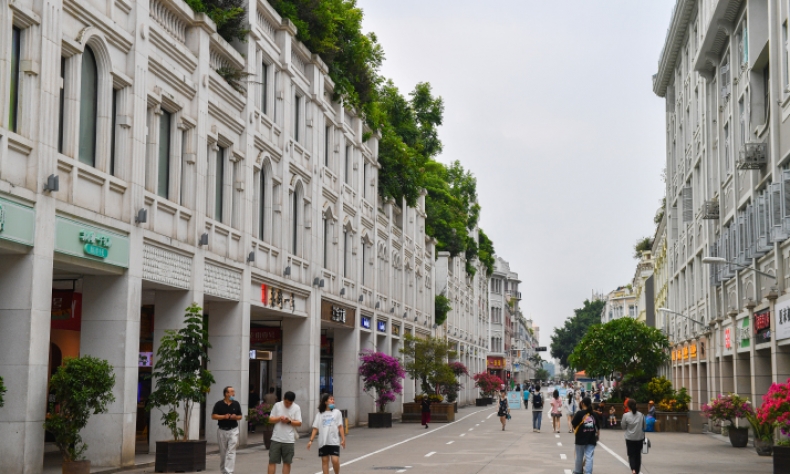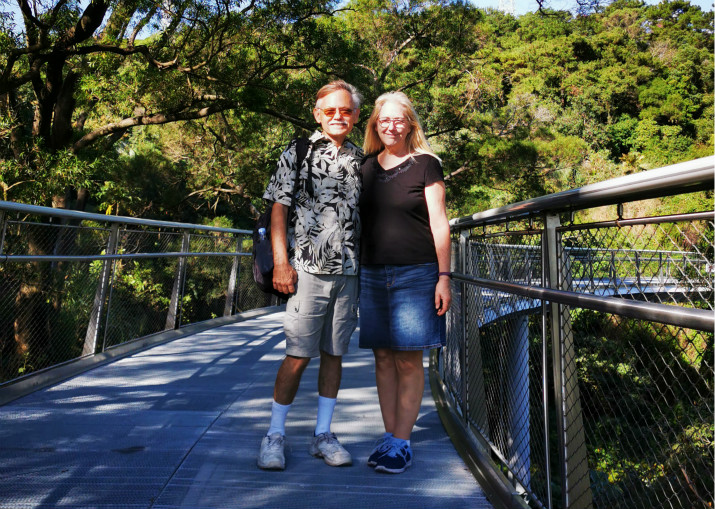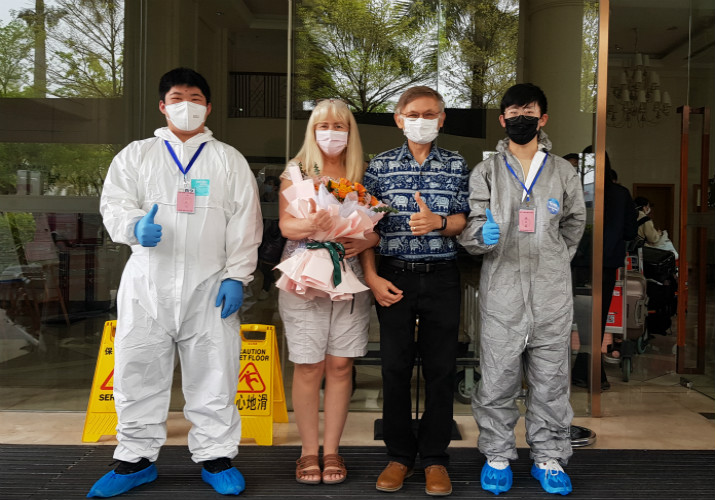
Pioneering Port city Embodies Chinese Dream of National Rejuvenation Coming True
Chinese leaders today, like their forebears centuries ago, have continued to demonstrate their competence in engineering and the sciences as they’ve provided a foundation for not just Xiamen but for the entire nation.
When our family moved to Xiamen in the southeastern province of Fujian in 1988, it was hard to believe that only a century earlier many Westerners had claimed that Xiamen boasted the wealthiest square mile on earth.
For centuries, Xiamen had been famed for both its deep natural port and “a kindlier spirit, a more generous feeling, predominant at Amoy [Xiamen], toward foreigners, and traders, and visitors, than at other parts of China,” as authors Thomas Allom and George Wright wrote in their 1843 book China in a Series of Views, Displaying the Scenery, Architecture, and Social Habits of That Ancient Empire.
Xiamen was not only rich but also talented, producing pioneers such as Dr. Lin Qiaozhi, mother of modern obstetrics and gynecology in China, John Ma, father of modern Chinese sports, Lu Zhuangzhang, the first Chinese to propose a system of spelling for the Chinese languages, astronomer Yu Qingsong, and dozens of others who influenced not just the nation but the world.
But by 1988, the thousands of once elegant Amoy Deco villas on Gulangyu, the tiny island off the coast of Xiamen called Kulangsu locally, which would later become a UNESCO World Cultural Heritage Site, were in disrepair. The villas, combining traditional Chinese and Western architecture, had been converted into apartments and dorms. Xiamen’s roads were narrow and potholed. We had daily power outages, and the foreign expert building’s water outages sometimes lasted for three or four days.
Public transport was so poor that I tried to buy a pedicab but was told, “Foreigners can’t buy commercial vehicles!”
“It’s for family use, not for profit,” I argued.
“How would I know?” the clerk retorted. “I’ve heard America’s economy has problems.”
After a month of arguing, Xiamen University leaders finally stamped an official document promising I’d not pedal for profit. I had ridden my new pedicab only 200 meters when a youth with his girlfriend yelled, “How much to Zhongshan Park?”

Contagious confidence
Although we weren’t happy with the living conditions, we fell in love with Xiamen’s warmhearted and hospitable people. In spite of problems, they were cheerful and optimistic because life was already better than it had been in half a century and they were confident things would get even better. Their contagious confidence so captivated us that I agreed to help Xiamen University’s fledgling MBA program for a year or two—and we’re still here three decades later, and have no plans to leave.
As I learned about Chinese history and culture, and the pragmatism and efficiency of Chinese governance, I too began to share the locals’ confidence in the future, yet none of us dreamed that the transformation would be so rapid and complete. I thought we were simply planting trees for future generations to enjoy the shade, but within two decades we were enjoying life in a town that the UN had recognized as one of the planet’s most livable cities.
What most impressed me about Xiamen was the leadership’s holistic and long-term vision. Hong Yongshi, Xiamen’s mayor in the 1990s, declared the city would not grow at the expense of the environment and then try to restore it, but balance growing and greening. As a result, Xiamen was grown and greened over a 20-year period. Its unique mix of rich business opportunities coupled with a garden island environment made the city a magnet for investors from all over China and abroad.
Yet even though I had witnessed Xiamen’s impressive changes, I had no idea of the sophistication of the visionary and holistic urban planning that had made those changes possible until 2002, when I spent eight months helping Xiamen prepare for the international competition for livable communities in Stuttgart, Germany.
After eight months of research, I was confident that our city would do well, but never imagined the six international judges would not only vote Xiamen but also admit that theirs were far behind. After my presentation, many leaders from other countries bombarded me with such questions as, “How could a city change so rapidly and completely?” “How did they grow without sacrificing the environment?” “How do you get so many volunteers for everything?” “Do you believe Xiamen will continue improving?”

Art of governance
In 2004, Xiamen also received the UN-Habitat Scroll of Honor Award as a tribute to its contributions to developing housing. Our city has improved to this very day, thanks to visionary leadership and a capable populace. But much of Xiamen’s success is also due to the support of a national system of governance that even centuries ago astonished Western observers.
In 1731, British politician Eustace Budgell said China had many great inventions but the entire world recognized that its greatest achievement was its “art of government.” Great thinkers such as Voltaire even urged European monarchies to adopt China’s governance principles and to choose leaders based on competence, not connections or heredity.
Chinese leaders today, like their forebears centuries ago, have continued to demonstrate their competence in engineering and the sciences as they’ve provided a foundation for not just Xiamen but for the entire nation. Over the years I helped a dozen cities enter the international livable cities competition and all but one won the gold because Chinese cities have what most foreign cities do not—a system of government in which all levels, from township to national, are integrated to efficiently pursue a common goal grounded in pragmatic economics, sciences and engineering to meet the needs of one fifth of the world’s population.
In 1994, I drove 40,000 km around China, even to Inner Mongolia Autonomous Region in the north and Tibet Autonomous Region in the southwest, to see the extent of changes, and retraced that trip in 2019. I saw firsthand that not just Xiamen but even remote cities in the west no longer endure power and water outages because of such historically unparalleled projects as the Three Gorges Dam, built for flood control, irrigation and clean electricity production, the West-to-East Electricity Transmission Project to divert electricity from the power-surplus west to the densely populated east, and the South-to-North Water Diversion Project to bring water to the drought-prone north.
And not just Xiamen but even remote mountain towns and villages are connected by the world’s most extensive high-speed railway and highway networks. These transport facilities are benefiting the rest of the world through the Belt and Road Initiative.
In October 2019, I thought it was ironic when India, which has opposed the Belt and Road Initiative, cut shipping costs by routing their cargo through Xiamen. India’s largest container port, Nhava Sheva on the western coast, sent cargo to Uzbekistan in the north via Xiamen, far to the east. Politics notwithstanding, even India has no efficient alternative to the initiative.
Dream coming true
Today, Xiamen is worlds apart from the backwater town we moved to in 1988. Our beautiful garden island not only attracts business and hi-tech innovation but also tourists, often ranking first or second in China as a holiday destination. But where most people must travel to Xiamen and stay in hotels, my wife and I enjoy a Xiamen holiday 365 days a year, and we never tire of it. We also never take it for granted because we remember too well how much Xiamen has changed thanks to visionary local, provincial and national leadership.
In spite of the great changes in Xiamen and the rest of the country, we are confident that the best is yet ahead. As American missionary Mary Gamewell, who worked on girls’ education
in China for over a decade, wrote a century ago, “China is not like ancient Egypt, whose greatness has departed though she still lives on. China is a vital force whose largest possibilities of development lie before and not behind her. A new fresh life is beginning to course through the nation’s veins.”
Her words are even truer today. I believe that China has achieved the Chinese dream. My dream is that the world can learn from China and make it the world’s dream.
The author is OneMBA academic director at Xiamen University School of Management and ambassador of the New Channel International Education Group
 Facebook
Facebook
 Twitter
Twitter
 Linkedin
Linkedin
 Google +
Google +










